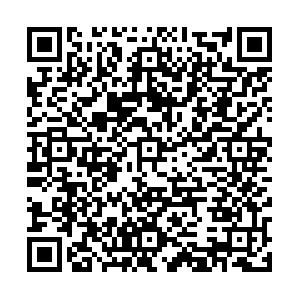The prevalence of hyperuricemia and its influencing factors among the employees in a large state-owned enterprise of western China
-
摘要: 目的 了解西部某大型国企员工高尿酸血症(hyperuricemia,HUA)患病率及其影响因素。方法 采用横断面调查的方法,对西部某大型国企参加体检的员工进行调查。调查内容包括问卷调查、体格检查以及生化指标测定。结果 本次共调查4 180名员工,HUA患病率为16.6%,年龄标化患病率为13.2%;其中男性患病率为21.5%,标化后患病率为21.8%;女性患病率为4.0%,标化后患病率为4.1%,男性患病率高于女性,差异有统计学意义(χ2=187.608,P<0.001)。单因素分析结果显示,吸烟、夜班、野外工作、工作场所海拔≥3 500 m的员工HUA患病率较高(均有P<0.05),分别为61.3%、20.0%、21.5%和19.7%;高胆固醇、高甘油三酯、高血压以及超重/肥胖者HUA患病率均高于正常对照组(均有P<0.05),分别为27.3%、31.1%、21.2%和24.7%。非条件Logistic回归分析显示,在控制其它混杂因素后,性别、年龄、血清胆固醇和甘油三酯水平、高血压、超重/肥胖、工作类型与HUA密切相关,其中性别因素影响最大(OR=4.879,95% CI:3.538~6.728)。结论 该大型国企员工尤其是男性中青年人群HUA患病率较高,建议针对重点人群和相关危险因素开展基于工作场所的健康促进活动。Abstract: Objective To explore the prevalence of hyperuricemia (HUA) and its risk factors among the employees of a state-owned enterprise of western China. Methods A cross-sectional survey was conducted among the employees in a large stated-owned enterprise of western China. Questionnaire, physical examination and biochemical index determination were performed. Results 4 180 employees were included in this study. The prevalence (age standardized prevalence) of HUA was 16.6% (13.2%), and 21.5% (21.8%) for male and 4.0% (4.1%) for female, respectively (χ2=187.608,P<0.001). The HUA prevalence was significantly higher among the employees who were smokers (61.3%), doing the night shift (20.0%) and field work (21.5%), working at a high altitude (≥3 500 m,19.7%), with high total cholesterol (TC) (27.3%) and triglyceride (TG) (31.1%), hypertension (21.2%) and overweight/obesity (24.7%) (all P<0.05). The Logistic analysis showed that, after adjusting other factors, gender, age, TC and TG, hypertension, obesity and job type were closely associated with HUA, in which the maximum influence was gender (OR=4.879,95% CI:3.538-6.728). Conclusions The HUA prevalence was higher among the middle-aged male employees in this enterprise. Worksite based intervention program should be conducted.
-
Key words:
- Workplace /
- Hyperuricemia /
- Risk factors
-
Wang YL, Zeng C, Wei J, et al. Association between dietary magnesium intake and hyperuricemia[J]. PLoS One, 2015,10(11):e141079. Fu S, Luo L, Ye P, et al. Epidemiological associations between hyperuricemia and cardiometabolic risk factors:a comprehensive study from Chinese community[J]. BMC Cardiovasc Disord, 2015,15:129. 潘明罗,邵大荣,刘燕红,等. 缺血脑卒中和出血脑卒中危险因素的比较研究[J]. 中华疾病控制杂志, 2015,19(9):883-886. Kanda E, Muneyuki T, Kanno Y, et al. Uric acid level has a U-shaped association with loss of kidney function in healthy people: a prospective cohort study[J]. PLoS One, 2015,10(2):e118031. 国家心血管中心. 中国心血管病报告2014[M]. 北京: 中国大百科全书出版社, 2015. 中国成人血脂异常防治指南制订联合委员会. 中国成人血脂异常防治指南[J]. 中华心血管病杂志, 2007,35(5):390-419. 胡大一,丁荣晶. 无症状高尿酸血症合并心血管疾病诊治建议中国专家共识[J]. 中国全科医学, 2010,13(11):1145-1149. 骆建明,赖俊,雷正宏,等. 华东地区某供电企业职业人群健康状况[J]. 中华劳动卫生职业病杂志, 2014,32(11):837-838. 袁宝石,刘岚,马志红,等. 北京地区航天系统职工高尿酸血症影响因素分析[J]. 中国预防医学杂志, 2014,15(2):134-137. 强艳,刘贺荣,宋辉,等. 宁夏部分人群高尿酸血症的流行特征研究[J]. 工业卫生与职业病, 2014,40(6):423-426. 周明莉,杨永利,康立,等. 郑州铁路局职工高尿酸血症患病率及影响因素研究[J]. 中国卫生检验杂志, 2015,25(15):2599-2601. 李婷欣,杨瑛,李云,等. 成都市某事业单位在职人群高尿酸血症的患病情况及相关因素分析[J]. 中华健康管理学杂志, 2010,4(2):97-98. Chien KL, Chen MF, Hsu HC, et al. Plasma uric acid and the risk of type 2 diabetes in a Chinese community[J]. Clin Chem, 2008,54(2):310-316. Nakanishi N, Tatara K, Nakamura K, et al. Risk factors for the incidence of hyperuricaemia: a 6-year longitudinal study of middle-aged Japanese men[J]. Int J Epidemiol, 1999,28(5):888-893. Oh JS, Choi WJ, Lee MK, et al. The association between shift work and hyperuricemia in steelmaking male workers[J]. Ann Occup Environ Med, 2014,26(1):42. Chen W, Liu Q, Wang H, et al. Prevalence and risk factors of chronic kidney disease: a population study in the Tibetan population[J]. Nephrol Dial Transplant, 2011,26(5):1592-1599. 余丽莎,孙晓红,马黔平,等. 贵州省少数民族地区部分成人高尿酸血症的相关因素分析[J]. 中华疾病控制杂志, 2015,19(5):443-446. -

 点击查看大图
点击查看大图
计量
- 文章访问数: 439
- HTML全文浏览量: 110
- PDF下载量: 5
- 被引次数: 0



 下载:
下载: